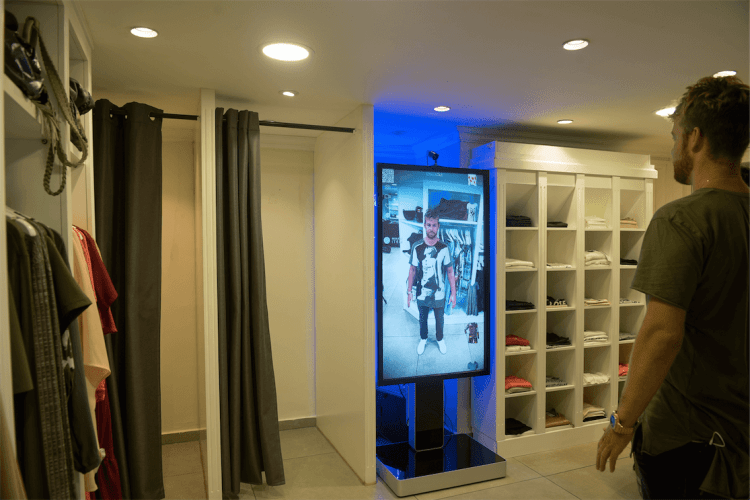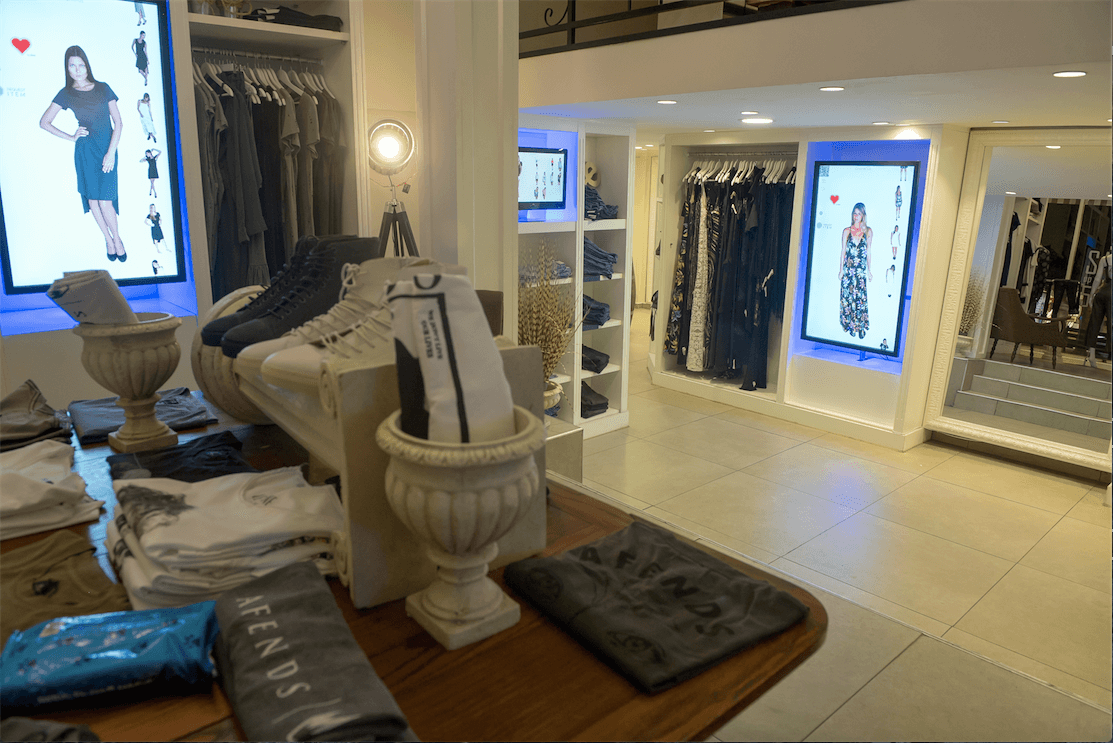In “bricks-and-clicks” retail, there is often a disconnect between the online and offline worlds. Sometimes that gap is systemic, in that the retailer actively keeps the two apart, but mostly it is due to a lack of cohesion across ecommerce and in-store offerings.
Today CheckOut Apps has announced the launch of its platform to connect online and offline sales. And it is utilizing machine learning to better understand the connections between online sales activity and in-store preferences, presenting that data using tablets, screens, and interactive mirrors.
The system, which recently completed a pilot in its home market of Tel Aviv — where it increased in-store time by 16 percent — analyzes both customer behavior and transaction data from the retail chain’s website to discover purchasing trends. It then uses this information to update in-store display screens in real time. Of course, algorithms come into play here, because online and offline shoppers differ in their behavior and activity.
“Online and offline shoppers differ in that, ironically, while online shoppers have a wider variety, online customers usually will look only at the first few pages,” Asaf Shapira, CEO and cofounder at CheckOut Apps told me. “When you’re in the store, you usually scan everything with your eyes. Also, online store websites usually do not update ‘hot-selling’ items in real time to appear on the first page of the website, especially not based on offline in-store sales in real time. Shoppers are also more likely to abandon their online shopping cart than their offline one.”
Those behaviors are obvious, of course, but it seems that online and offline shopping are more related to each other than ever.
“Despite these differences in experiences, it seems that whenever an item is successful online (in terms of purchases), it is also successful offline and vice versa,” Shapira said. “Our goal is to maximize the user experience for both online and offline shoppers by uniting both worlds. We do so by using the online world as an indicator, utilizing data from online websites in order to update in-store displays.”
The system calculates conversions in real time. If there is an increase in in-store sales, those items continue to be presented. However, if a product display doesn’t affect in-store sales, the system rotates various offers and split tests them to determine a winner. In-store data is also used to re-arrange the order of items on the website, showing the hottest products first in order to increase sales.
In essence, the solution brings algorithms that we’re used to using on ecommerce sites into the store.
“Today’s online retail sites have long been optimized based on vast data and algorithms, showing customers the items they want to see and are more likely to purchase at any given time of the day,” Shapira said. “Yet this smart online experience has not been translated to real-life stores. While the way clothes are shown off inside a store directly affects conversion rates, the current in-store displays and mannequins are usually not even changed on a weekly basis, let alone updated in real time.”
The in-store displays take the form of large touch screens, interactive mirrors that allow users to virtually try on the goods, and tablets that allow for product browsing. These displays show items that are available in that area of the store to ensure relevancy and increase conversion.
Online to offline attribution is often a tricky problem to solve, so how does CheckOut Apps impact that strategy?
“We are already utilizing an SDK that the chain store can implement in their mobile app in order to personalize each shopper’s experience,” Shapira said. “We do in-store personal retargeting, so that any items the customer previously showed interest in at home will later reappear in the store. So when a customer uses the store’s app while standing next to an in-store digital screen, we show them the items that they previously looked at on their smartphone, so that there’s no need for them to seek them out.”
Mobile is an important part of the omnichannel puzzle, since — in the U.S. at least — mobile has already disrupted the retail industry. The solution goes one further by integrating with wearable devices for retail staff.
“We developed a platform that allows the shopper to click on the item of interest on the digital screen and notify a salesperson wearing a smartwatch so that they will immediately know the item, its size, and the customer interested,” Shapira said. “It is important to note that this is a side solution because only a small percentage (less than 1 percent) of customers actively use the app while they are at the store.”
So what is next for CheckOut Apps?
“Our goal is to create a full omnichannel customer experience solution,” Shapira said. “Our customer experience currently is different online and offline. We want this experience to stay consistent and customized. That’s why we strive to create a continuous shopping experience between the online and the offline and allow people to feel like they are on the web when they are at the store.”
Since machine learning is a precursor to artificial intelligence, how will that affect the future of retail experiences?
“In the future, A.I. comes into play when we add further data, such an analysis of the environmental conditions in which customers are living, and which affect their shopping habits and can thereby predict what their future purchases will be,” Shapira said. “These include customers’ moods, what’s happening in the news, holidays, temperatures, special events, celebrity gossip, and various fashion trends. We will take all this into account and recommend specific fashion items to these customers, based on this data.”
CheckOut Apps online to offline retail solutions are available from today, with details available from its website.
VentureBeat's mission is to be a digital town square for technical decision-makers to gain knowledge about transformative enterprise technology and transact. Learn More


